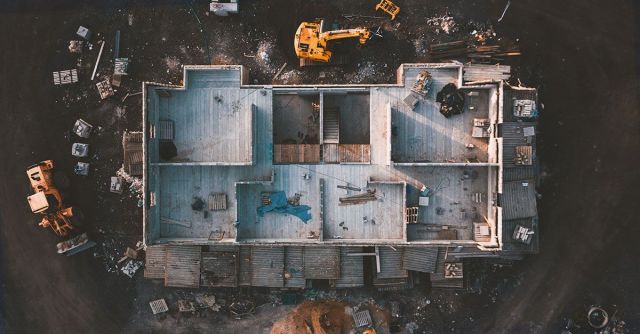How Will the Coronavirus Impact the Construction Industry?
 Just three weeks ago, doctors diagnosed the first case of coronavirus COVID-19 in the US. Since then, the virus has continued to spread. As of this morning, the virus has been confirmed as the cause of death for 31 Americans.
Just three weeks ago, doctors diagnosed the first case of coronavirus COVID-19 in the US. Since then, the virus has continued to spread. As of this morning, the virus has been confirmed as the cause of death for 31 Americans.
In China, more than 3,100 have died of the illness since the outbreak began late last year.
While some construction companies are implementing coronavirus precautions — screening jobsite visitors for flu-like symptoms, for example — most are business as usual. So when will the industry begin to feel the effects of the global pandemic?
How China’s health crisis is impacting construction
“Supply chain issues haven’t been reported yet,” says Mandi Kime, Director of Safety at AGC of Washington. “There are concerns that if the outbreak spreads that we may see complications in our ability to access supplies — not just sanitizing and cleaning supplies but materials. There could be workforce issues on the suppliers’ ends — that they can’t deliver products or keep to their delivery schedules. It’s not going to impact local supply at this point.”
That said, the US imports approximately 30% of its construction products from China. Though there haven’t been reports of the pandemic impacting supply chains yet, it’s a matter of when not if.
By late-February, 50,000 construction workers in Hong Kong had been laid off as a consequence of the coronavirus. Another 80,000 had their hours significantly reduced. A shortage of materials from mainland China is to blame.
Supply chain delays caused by the impact of China’s aggressive containment measures could impact construction in the US long after COVID-19 is neutralized.
According to a report in the National Law Review, production lines in China were at a standstill due to quarantined workers.
It’s reasonable to consider supply chain interruptions as a result of proactive measures in mainland China. It’s also logical to anticipate delays because of absenteeism.
Still, Kime points out that the 2009 H1N1 (AKA, “swine flu”) pandemic did not affect supply chains. “You should keep your eye on the supply chain, but we didn’t see issues with H1N1,” Kime says. “We saw a run on sanitizing supplies and cleaners but no supply chain issues or projects being shut down or delayed because of the impact.”
Working sick, absences, and closures
While many businesses offer employees options for work-from-home, construction companies typically require healthy workers to be on-site. And for anyone not feeling 100%, staying home isn’t always a viable option, especially for hourly workers or anyone without paid sick days.
Beyond a worker’s sickness, emergency protocol within the community can trigger a variety of challenges. If public transportation halts, many workers may find it difficult or impossible to show up for work on time – or at all. Additionally, if schools or child care facilities shut down, working parents may have no choice other than to stay home.
Almost 300 million students worldwide have been impacted by coronavirus-related closures already.
Construction site closures are going to occur in certain areas. If regions are locked down and residents quarantined, all construction in the area would have to cease. (Learn about force majeure and legal payment remedies with project delays and cancellations from our partners at Levelset.)
How to prepare your construction company and yourself
As with any safety measures, remind workers how to minimize risk on the jobsite.
“You don’t want to have people in close proximity to each other, but you can be on a jobsite and not be within six feet of each other,” Kime says. “Those who are immunocompromised should consider whether they should stay home depending on what their tasks are.”
In preparation for increased absenteeism, supervisors should cross-train employees to handle other functions.
It can also be helpful to encourage workers to develop contingency plans for child care in the event of long-term closures of schools and daycare centers.
In addition to clarifying or amending sick-leave policies and encouraging work-from-home for all employees who can be productive working off-site, construction companies can be proactive in communicating potential delays due to coronavirus-related issues.
“The important thing to do is communicate potential impacts on schedules,” Kime says. “We suggest early communication and communication of fact. Let the GCs or owners know, ‘We have an issue with a handful of people staying home, this is what we expect the delays to be.’
“It could be the case that in the near-future a project owner or GC will say that the risk is too great to continue work if the site is near to where there are more cases, or close to a medical facility or an area where the exposure risk is high.
“Owners understand what’s going on right now.”

 Matt Schneiderman •
Matt Schneiderman • 














